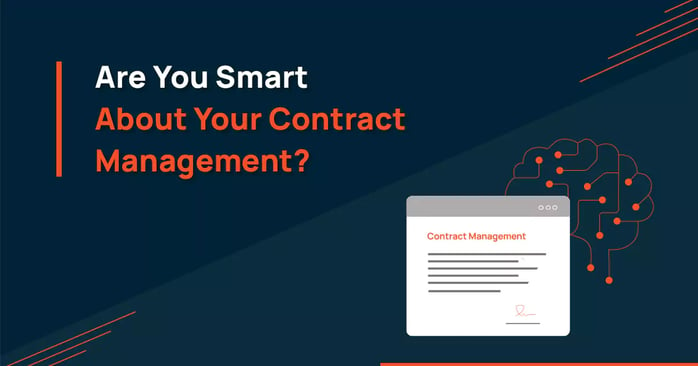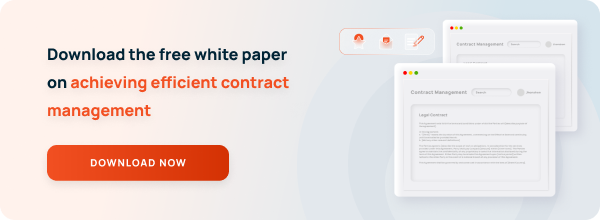Are You SMART About Your Contract Management?

How do you realistically and effectively manage your contract management lifecycle?
Ask this question to any paralegal, attorney, or member of an in-house legal team, and you will be surprised at the variety of responses. I’ve gotten the full spectrum, “We don’t effectively manage our contracts, I am calling you because we’re inadvertently renewing contracts and I keep missing important dates. This can’t happen anymore,” to “We have a team in charge of contracts, they do everything by email and Excel,” to “We use another third party platform, but they are storing all of our data; we can’t compile the information we need.”
What we have found interesting is that most of the answers we receive when consulting focus on what the organization is currently doing for contract management and why it is not working. Very few will charter the territory of why the organization has chosen the current process or what goals they have been trying to achieve. Typically, we only hear from clients when something goes wrong and the company is either losing money, experiencing major contract management bottlenecks, or the legal team can’t get anything done because they are riddled with unnecessary requests. This is understandable, but the retroactive business model is outdated. Rather than focus efforts on mitigating the negative results, why not take a proactive approach by setting contract management goals like any other business process?
The SMART Approach to Contract Creation and Management
Management by objective or result has been the foundation of management programs since the 1950s, tracing back to Peter Drucker in his 1954 book The Practice of Management. It focuses management and goal attainment on the process of goal setting and choosing the best course of action to obtain the desired results. It is straightforward business; the real question is how do we apply the foundation of goal setting to attain effective results in Contract Management?
Every organization is going to have different metrics they are trying to attain and are at different levels of contract management lifecycle maturity. There isn’t going to be a tried and true checklist that works for every in-house legal team. Instead we should go back to the basics and think about Contract Lifecycle Management goal creation from a SMART perspective.
Specific – Choose a specific area(s) to target improvement. Are we improving the process as a whole? Is there a specific area within the contract lifecycle that is causing a bottleneck?
Measurable – Find a way to quantify results and create quantifiable meaning. How long is the process taking to request, create, approve, and publish contracts? For each contract?
Assignable – Create accountability within the goal by assigning it. Who is the contract gatekeeper that assigns the contract to the correct specialist? Who handles contract requests? Who handles the specific tasks of drafting, approving, reviewing for each type of contract?
Realistic – Set realistic expectations for your goals, make sure there is room for error. What are the checks and balances within the system? Are the reminder dates realistic for each type of contract? Are the contract priorities realistic?
Time-Related – Set realistic time expectations as to when the task will be complete or what would like to be accomplished in a period of time. How long does each contract drafter have to complete their task? What is the overall cycle goal for contract creation?
An Even SMARTER Approach
By applying SMART criteria to goal creation or process expectancies, we can set realistic expectations for our teams, and set contract lifecycle management efforts that can be measured and attained. It is a straightforward consistent approach that can be applied to just about any scenario, team situation, or process creation. We can also expand SMART metrics one step further, to become smarter about our overall approach to goal attainment. Creating all of the SMART information is great, but rounding out the application is what ensures true goal creation that is consistent, applicable, and forward thinking – and allows us to become overall SMARTER.
Evaluate – Set specific resources aside to evaluate the SMART metrics and goals. Who is in charge of general oversight? Evaluate the contract lifecycle and bottlenecks through reporting analytics.
Review – Finally, review or re-do goals after the evaluation process. Literally go through the SMARTER approach again after a period of time, thereby creating a consistent method to continually updating your processes and goals.
The SMARTER approach is a continuous cycle of evaluating current goals and continually adjusting processes to meet and attain those goals. Keep in mind the realistic aspect of those goals, but by following this straightforward approach to goal creation, we can attain a consistent process for continual improvement. Within contracts lifecycle management, you can expect the number of invalid requests to reduce, legal team’s efficiency to increase, and an over all reduction of contract creation cycle time – a SMARTER approach to Contract Lifecycle Management and organizational cohesiveness.
Related Article:
Download a Free Contract Management Whitepaper by Clicking Below

